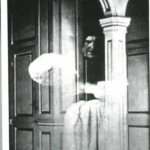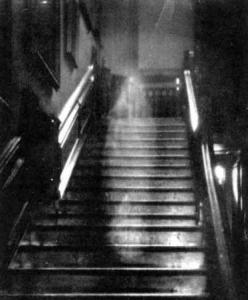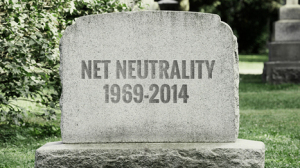by OLLS Staff
The Legislative Council is scheduled to meet this Wednesday, October 15, to consider the legislation recommended by the interim committees that have met over the 2014 interim. Each of the bills that the Legislative Council approves will be introduced during the first month of the 2015 regular legislative session that convenes January 7, 2015.
Last week, we summarized the bills recommended by four of the 2014 interim committees. This week, we’re summarizing the recommendations of the Wildfire Matters Review Committee, the Marijuana Revenues Committee, and the Water Resources Review Committee.
The WMRC requested that the staff of the OLLS draft seven potential bills and one joint resolution. After one of the bill requests was withdrawn, the committee considered the six remaining bill concepts at its September 26, 2014, meeting. Ultimately, the WMRC approved the following five bills and one joint resolution as recommended legislation for the Legislative Council’s approval or disapproval:
Bill A “Concerning the continuation of funding for the wildfire risk reduction grant program.” In 2013, the General Assembly created the wildfire risk reduction grant program (Senate Bill 13-269) funded through the wildfire risk reduction fund. An initial transfer of $9.8 million was made from the general fund to the wildfire risk reduction fund as a result of that legislation. The bill directs the state treasurer to make another transfer of the same amount, effective July 1, 2015. The prime sponsors of the bill, which will be a Senate Bill if approved, are Senator Nicholson and Representative Exum.
Bill B “Concerning a grant program to promote the use of woody biomass as a fuel source for public buildings.” The bill promotes the use of woody biomass as a fuel source for public buildings by creating the woody biomass grant program, which is funded by an annual $1 million transfer from the general fund for five fiscal years. The executive director of the Department of Natural Resources will award grants to a public entity that will use woody biomass as a fuel source for a public building’s biomass energy system when either the use of the grant allows the public building to be cost-effective when compared with other fuels or the executive director reasonably believes that making the grant provides other substantial benefits as specified in rules. The bill specifies additional matters that must be included in the rules. The prime sponsors of the bill, which will be a Senate Bill if approved, are Senators Nicholson and Jones and Representative Exum.
Bill C “Concerning the status under the ‘Colorado Governmental Immunity Act’ of state employees conducting prescribed fire activity.” The bill clarifies that an employee of the state conducting prescribed fire activity who has been officially certified or recognized by the state as being able to conduct activity and who is acting within the course and scope of his or her employment is covered by existing sovereign immunity provisions except where the employee’s act or failure to act giving rise to the claim of injury was willful or wanton. The prime sponsors of the bill, which will be a House Bill if approved, are Representative Hamner and Senator Roberts.
Bill D “Concerning nongovernmental volunteer fire departments in Colorado, and, in connection therewith, enacting the ‘Volunteer Fire Department Organization Act’.” To assist areas that currently lack full-time fire protection services, the bill sets forth a framework to establish and maintain volunteer fire departments that are recognized by the Division of Fire Prevention and Control in the Department of Public Safety. The bill also makes available grants for technical and funding assistance for the establishment of volunteer fire departments recognized by the division. The prime sponsors of the bill, which will be a House Bill if approved, are Representatives Buck and Hamner and Senator Roberts.
Bill E “Concerning the classification of agricultural land when the land is destroyed by a natural cause.” The bill specifies that, if agricultural land is destroyed by a natural cause on or after January 1, 2014, and, were it not for the destruction, the land would have qualified as agricultural land for the following property tax year, the agricultural land classification will remain in place for the year of destruction and the four subsequent property tax years unless certain exceptions apply. The prime sponsors of the bill, which will be a House Bill if approved, are Representatives McLachlan and Hamner and Senator Roberts.
Resolution A “Concerning requests to the federal government regarding support for wildland fire suppression.” This joint resolution asks the federal government to:
(1) Create a separate fire suppression line item in the federal budget; and
(2) Purchase and deploy additional aerial firefighting equipment to assist in fighting wildfires across the country.
The prime sponsors of the resolution, which will be a House Joint Resolution if approved, are Representative Exum and Senator Roberts.
Other committee action. In addition to considering the above legislation, the WMRC approved a letter to the Joint Budget Committee describing the WMRC’s recommendations for funding various wildfire mitigation efforts. Moreover, in accordance with Senate Bill 14-164, the WMRC considered creating a statutory wildland and prescribed fire advisory commission (WAPFAC) under the Division of Fire Prevention and Control in the Department of Public Safety. The WMRC decided not to recommend codification of the current gubernatorial WAPFAC and, pursuant to SB14-164, communicated this recommendation in a letter to the House Agriculture, Livestock, and Natural Resources Committee and the Senate Agriculture, Natural Resources, and Energy Committee.
The MRC met four times during the 2014 interim. Legislative and executive branch staff briefed the committee regarding the most recent retail marijuana revenue forecast as well as the retail marijuana market, retail marijuana tax revenue collections, and regulation of the retail market. The MRC also heard presentations from representatives from various state agencies and non-profit entities that received moneys from marijuana taxes or fees for the 2014-15 fiscal year. The MRC approved the following two bills as recommended legislation for the Legislative Council’s approval or disapproval:
Bill A “Concerning marijuana issues that are not regulated by the department of revenue.” The bill requires the following in connection with medical marijuana:
- The Colorado medical board must adopt rules regarding guidelines for physicians who make medical marijuana recommendations for patients suffering from severe pain;
- The state health agency must adopt rules regarding guidelines for primary caregivers to give informed consent to patients that the products they cultivate or produce may contain contaminants and that the THC levels are not verified;
- All primary caregivers must register with the state health agency and the state medical marijuana licensing authority (licensing authority). A primary caregiver who is not registered must register within 10 days after being informed of the duty to register. If a person fails to register within this time, the state health agency and licensing authority will prohibit the person from ever registering and acting as a primary caregiver; and
- The licensing authority and the state health agency must share the minimum amount of information necessary to ensure that a medical marijuana patient has only one caregiver and is not using a primary caregiver and a medical marijuana center.
In addition, the bill permits the money in the marijuana tax cash fund to be used to fund the implementation of any bills approved by the MRC. The prime sponsors of the bill, which will be a Senate Bill if approved, are Senator Aguilar and Representative Singer.
Bill B “Concerning the authority of certain local governments to implement specified taxes on retail marijuana subject to approval by the eligible electors of the local government.” Currently, a county or municipality that allows the sale of retail marijuana may levy the standard county or municipal sales tax on the sale of retail marijuana in addition to the state retail marijuana sales tax and the state retail marijuana excise tax. The bill clarifies that counties and municipalities are authorized, subject to voter approval, to levy, collect, and enforce a sales tax on all sales of retail marijuana and retail marijuana products by a retailer, in addition to any sales tax imposed by the state or by the county or municipality as applicable.
In addition, the bill authorizes, subject to voter approval, a county and a municipality to levy, collect, and enforce an excise tax on the first sale or transfer of unprocessed retail marijuana by a retail marijuana cultivation facility, in addition to any sales tax that the state or the county or municipality imposes, as applicable, and in addition to the state excise tax imposed on retail marijuana.
The Department of Revenue may not collect, administer, or enforce a retail marijuana sales tax or excise tax imposed by a county or municipality. Instead, the county or municipality that imposes the tax must collect, administer, and enforce the tax.
A county or municipality in which the eligible electors approve an additional retail marijuana sales tax or excise tax may credit the revenues collected from the taxes to the county’s or municipality’s general fund or to any special fund created in the county’s or municipality’s treasury. The governing body of a county or municipality may use the revenues collected from the taxes for any purpose as determined by the governing body or the electors of the county or municipality, as applicable. The prime sponsor of the bill, which will be a House Bill if approved, is Representative Singer.
The WRRC met six times and took three tours during the 2014 interim. At its meetings, the committee received briefings on major water issues affecting the state, including planning for future water needs, funding needs for state water agencies and water projects, municipal outdoor water consumption, regulation of groundwater use, and the development of a Colorado Water Plan. In accordance with SB14-115, the WRRC also held nine public meetings, one in each geographic region associated with a basin roundtable, to collect feedback from the public on the draft Colorado Water Plan.
The WRRC requested the OLLS staff to draft 10 bills. Ultimately, three bills were withdrawn and, on September 30, 2014, the committee recommended the following six bills to the Legislative Council for approval:
Bill A “Concerning the promotion of water conservation in the land use planning process.” The bill directs the Colorado Water Conservation Board (CWCB), in consultation with the Division of Planning in the Department of Local Affairs, to develop and provide free training programs for local government water use, water management, and water conservation. The CWCB must also recommend best management practices regarding how to better integrate water demand management and conservation planning into land use planning. The CWCB and the Colorado Water Resources and Power Development Authority, in determining whether to provide financial assistance to a local governmental water supply entity, must consider whether the entity’s planners, if the entity has any, have taken the training and are actively applying the training in their planning decisions. The prime sponsors of the bill, which will be a Senate Bill if approved, are Senator Roberts and Representative Vigil.
Bill B “Concerning incentives for precipitation harvesting.” The bill expands the types of projects that are eligible for precipitation harvesting pilot projects to include the redevelopment of residential housing or mixed uses and new or redeveloped multi-building nonresidential property. The CWCB will update its approval criteria that sponsors of precipitation harvesting pilot projects can use for substitute water supply and augmentation plans. The bill reduces the amount of water required for a project’s temporary substitute water supply plan and permanent augmentation plan by the amount of historical natural depletion caused by the preexisting natural vegetative cover and evaporation on the surface of the area made impermeable as part of the pilot project. It also specifies that a project’s temporary retention of storm water for the purpose of improving water quality is not subject to an order of the State Engineer or division engineers, if the retention complies with the CWCB’s criteria and guidelines and the applicable requirements of the state’s water quality laws. The prime sponsor of the bill, which will be a House Bill if approved, is Representative Coram.
Bill C “Concerning augmentation requirements for wells withdrawing water from the Dawson aquifer.” Current law specifies that, beginning July 1, 2015, augmentation requirements for withdrawing water from the Dawson Aquifer must be based on actual aquifer conditions. The bill repeals this requirement, thereby continuing current law, which requires replacing actual out-of-priority depletions to the stream. Replacing post-pumping depletions is required only if necessary to compensate for injury. The prime sponsor of the bill, which will be a Senate Bill if approved, is Senator Hodge.
Bill D “Concerning the implementation of recommendation number one set forth in the study of the South Platte river alluvial aquifer prepared by the Colorado water institute pursuant to House Bill 12-1278.” The bill requires the CWCB, in consultation with the State Engineer, to administer two pilot projects in the geographic areas of Gilcrest/LaSalle and Sterling to evaluate alternative methods of lowering the water table in areas that are experiencing damaging high groundwater levels. It also authorizes the State Engineer to review an augmentation plan submitted to a water court if it includes the construction of a recharge structure. The water court may approve the augmentation plan only if the State Engineer approves or proposes changes to the operation and design of the proposed recharge structure. The prime sponsor of the bill, which will be a House Bill if approved, is Representative Coram.
Bill E “Concerning the establishment of a grant program for the management of invasive phreatophytes.” The bill establishes a five-year grant program for managing invasive phreatophytes, which are deep-rooted plants that consume water from the water table or the layer of soil just above the water table. The bill also creates the Invasive Phreatophyte Grant Program Account in the Noxious Weed Management Fund. The Department of Agriculture administers the grant program under its authority to manage noxious weeds. To qualify for a grant, an applicant must propose a project for managing invasive phreatophytes that uses best management practices. The prime sponsor of the bill, which will be a House Bill if approved, is Representative Coram.
Bill F “Concerning the appellate process governing a district court’s review of final agency actions concerning groundwater.” Under the bill, a district court that reviews a decision or action of the Ground Water Commission or the State Engineer on appeal may consider only the evidence originally presented to the commission or the State Engineer. The prime sponsors of the bill, which will be a Senate Bill if approved, are Senator Jones and Representative Coram.






